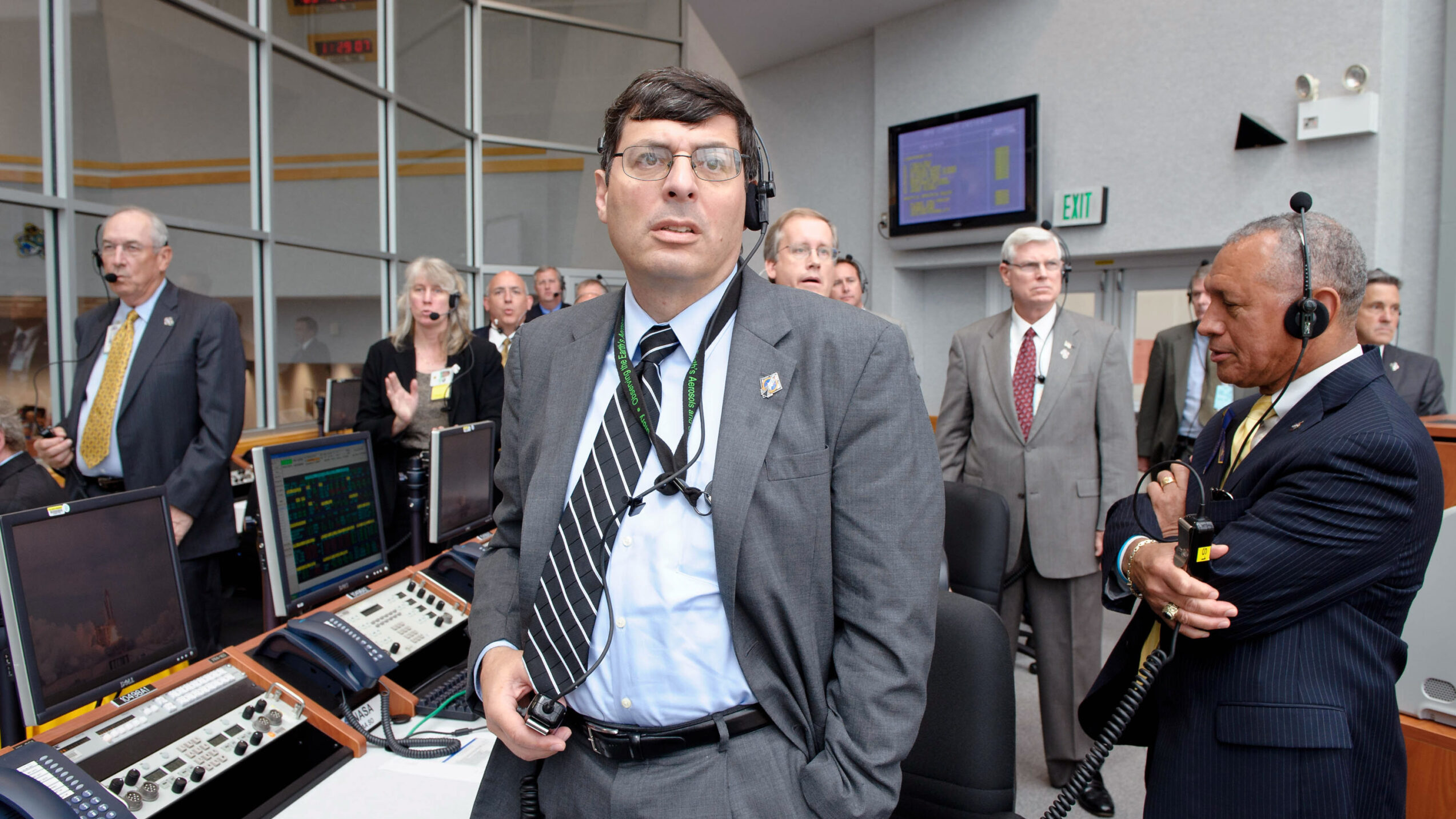
Christopher Scolese, center, is now head of the NRO. (Bill Ingalls/NASA via Getty Images)
CHANTILLY, VA: As Russia moves into Ukraine, senior US space officials today warned operators of both military and commercial satellites to be on the lookout for Russian meddling with systems that provide services to the region.
While indicating such targeting of American satellite companies is likely, officials did stop short of confirming that the US has seen such interference thus far.
“I think it’s fair to assume that, to the extent that [Russia] can, and to the extent that they feel it won’t extend the conflict out of their control, they will extend it into space,” Chris Scolese, director of the National Reconnaissance Office (NRO) told a conference here sponsored by the National Security Space Association (NSSA). “How they’re going to do that? What they’re going to do? I mean, you could imagine they’re already doing GPS jamming, as an example, and doing things against Ukraine.
“I would say for everybody that the important thing is to go off and make sure that your systems are secure and that you’re watching them very closely, because we know that the Russians are effective cyber actors,” he said, adding that “it’s better to be prepared than to be surprised.”
RELATED: Russia could target American space firms to blind Ukraine
Lt. Gen. Michael Guetlein, head of Space Force Space Systems Command, mined a similar vein in his fireside chat during the conference.
“We’ve been talking about the fact that space is contested, and we’re probably right in the middle now of our first space fight,” he said. “We have no doubt that the Russians have been preparing to negate our ability to use space for defense and for peace. And we’re starting to see those effects.”
Guetlein later clarified to Breaking Defense that he did not mean to imply that Space Force has seen specific interference with US satellites as Russia strides toward a full blown invasion of Ukraine; rather he was talking about Moscow’s recent flexing of its counterspace muscles, such as its November anti-satellite weapons test.
US government and commercial satellites are providing a range of services and capabilities — such as communications, GPS navigation signals and imagery of Russian troop movements — to Western forces gathering in Eastern Europe. The Ukrainian government, like many countries around the world, also uses GPS, and it is likely, although not confirmed, that Washington is sharing spy satellite images with Kyiv as well.
During Russia’s invasion of Crimea nearly a decade ago, the Obama White House allowed imagery from NRO satellites to be shared with Kyiv, although according to a 2015 report in the Wall Street Journal that imagery was degraded to avoid Russian wrath and protect US capabilities.
But what Ukrainian decision-makers have today, that they did not during the Crimean war, is access to imagery being provided publicly for free by a number of US commercial remote sensing firms, such as Maxar, Planet, and Capella.
Those same firms, along with a handful of others from the US and abroad, also are providing their imagery to the NRO as the spy agency seeks to expand its reach, vacuum up innovative tech, and improve its ability to share unclassified information with allies.
Last month, the spy agency awarded study contracts to five providers of synthetic aperture radar (SAR) imagery: multinational firm Airbus’s US arm; California startup Capella Space; Finnish firm ICEYE’s US branch; Florida startup PredaSAR; and California-based Umbra. The advantage of SAR satellites is that they can take images at night, and through clouds whereas traditional cameras cannot.
The spy agency also currently has contracts with Maxar, Planet and BlackSky for electro-optical imagery; and intends this spring to choose the winners for its expanded Electro-Optical Commercial Layer (EOCL) of remote sensing satellites.
HASC chair backs Air Force plan on space Guard units (Exclusive)
House Armed Services Chairman Mike Rogers tells Breaking Defense that Guard advocates should not “waste their time” lobbying against the move.



























